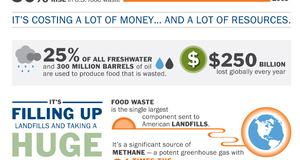From Discussions VOL. 10 NO. 3The GM Crop Network: An Overview of the Environmental, Political, Economic, and Human Health Contexts Surrounding Bt CornWe know that Cry proteins are effective at inhibiting certain species from feeding on developing Bt crops, and we are certainly correct in our pursuit to minimize the use of insecticide in agriculture. However, we need to evaluate Bt corn in perspective of the whole ecosystem. How do Cry proteins interact with non-target organisms? Can Cry protein concentration build up in the soil or contribute to untoward effects through water runoff? Such research questions are presently being explored. Furthermore, we must continue to remain informed and promote the pursuit of evidence-based science to provide the necessary answers. The genetic modification of crops has great intentions, similar to all other aspects of science. As we reviewed earlier, the simple equation all along has been to increase efficiency of crop agriculture in order to help produced more food to feed our growing global population. But this relationship does not do justice to the full capabilities of genetic engineering. Pamela Ronald, a plant geneticist and professor at U.C. Davis, cites several examples which illustrate the positive side of GM crops many consumers fail to see. Ronald, in one instance, notes how genetic engineering helped papayas resist ring-spot virus, and ultimately saved the whole Hawaiian papaya industry (Little, 2014). Moreover in her personal research, Ronald and colleagues have created a flood-tolerant rice that can grow in submerged fields. This seed has been accepted with open arms in Bangladesh and India where losing valuable crop to floods is a critical issue. These cases illustrate that GM crops cannot all be classified into one neat category, and that this science undoubtedly has a reserved seat in the future of agriculture. Unfortunately though, at least two problems still exist with the current state of this scientific technology: First, corporations have manipulated the system to use GM crops as a tool to primarily increase profit. Second, little research has been conducted studying the long term genetic and immunological effects on humans associated with those consuming GM crops. The existence of seed patenting rights is a severe hindrance to science, agriculture, and human health. The purpose of science is to share new findings about the world with our fellow community members, and more importantly use this new knowledge as a tool to progress collectively as a group. Biotechnology and genetic engineering classify as science and continue to provide novel methods for improving the food system. Despite this fact, these scientific principles have been used as tool to primarily increase profit, and the concept of seed patenting rights supports this idea. GM seeds are in the hands of a few organizations, most notoriously Monsanto, Dupont, and Syngenta, who have patenting rights and therefore control over who plants the crops and where they are to be used. As of 2006, these three companies together accounted for $9,000 million, or 39% of the worldwide proprietary seed market; the proprietary seed market refers to commercial seed that is subject to intellectual property (ETC Group, 2006). Why do these concepts cause problems? Seed patenting rights have restricted how GM seeds can be used, thus inhibiting any of the potential positives of this agricultural science. A mere three companies, Monsanto, Dupont, and Syngenta, control 53% of the world’s commercial seed market (Harris, 2013). This consolidation directly thwarts all of the well-intended efforts GM crops may have, because it takes away farmer rights and promotes seed homogenization. Have we adequately assessed how planting the same Bt corn seed all around the world affects the biodiversity needed to maintain success and viability in agriculture ? One major drawback of GM crops is that they promote genetic homogeneity and large-scale monocultures. The problem with monocultures, or continuously growing a single crop or plant species over a wide area, is that they contribute to loss of biodiversity and increase vulnerability of crops to climate change, pests, and diseases (Gertzberg, 2011). Why have the rights to plant and replant seeds been stripped away from the individuals who are actually producing our crops? In order for GM crops to truly be used as a tool promoting health, science, and progress, the concept of seed control must be abolished from the discipline. In addition, we should also realize that genetic engineering is not the only modern agricultural technique that can be used. For example, Rattan Lal, director of the Carbon Management and Sequestration Center at Ohio State University, has emphasized the need to develop farming practices that promote carbon sequestration. Lal argues that we can capture carbon that has been released due to fossil fuel use by developing novel farming practices that promote carbon sequestration (Schless-Meier, 2014). We must use all of this knowledge we are increasingly gaining, including genetic engineering, to improve the food system as opposed to creating a consolidated entity that is profit-driven. Knowledge of this entity we have coined as the “GM crop network” may have paradoxically overwhelmed individuals. However we need to remember that, “knowledge is power” and that the goal of education is to empower or rather activate the power that comes prepackaged with learners (Vella, 2002). The paragraphs above explain how environmental, economic, and political factors directly relate to GM crops, and how Bt corn is more than simply a seed that has been scientifically enhanced.. That being said, we have left out arguably the most important branch of the network, the relationship between human health and Bt corn. Specifically, it is interesting to ask how the greatly evolved and sophisticated human immune system recognizes Bt corn. How is it that humans have been able to compete with species such as bacteria and viruses, which replicate thousands of times quicker and thus evolve more rapidly than us? Evolution requires a change in the germ line, and thus has potential to occur every time a species reproduces or a cell replicates. The problem is that our low frequency of reproduction and non-error prone or “faithful” DNA polymerase provides us with relatively little opportunities to evolve as quickly as bacteria does. To this extent, we must thank our flexible and “plastic” immune defenses for our survival, as our immune responses are able to evolve during the course of our lifetimes. Adaptive immunity is just that, a system which is able to change and adjust to the foreign pathogens we habitually encounter. It is created so that our bodies can recognize an infinitely diverse spectrum of molecules that may be harmful. Mechanistically, it is formed by random rearrangements at the DNA level in regions encoding for B cell or T cell receptors. Why does this matter with respect to Bt corn though? Recall that the crop’s pest protection is encoded for by a gene. When expressed, a bacterial protein binds to the intestinal epithelial cells of specific insects which forms a pore. This induces cell death due to osmolarity imbalances. Mammalian intestinal epithelial cells lack the primary receptor for this set of Bt (Cry) proteins. It is not too extreme too question if our immune system recognizes these bacterial-derived proteins as foreign, and thus generates a specific immune response to them. Cry proteins, due to their bacterial origin, have the potential of inducing a human immune response, innate or adaptive. Opposite to adaptive immunity, the innate immune system, recognizes conserved pathogen-associated molecular patterns , which can be of bacterial, viral, fungal, or parasitic origin (Kuby, 2011). Receptors of the human innate immune system can bind to and interact with these broad classes of foreign molecules or patterns and are therefore referred to as pattern recognition receptors (PRRs). With this information, the scientific hypothesis of my research project can be demonstrated. Bt corn expresses a gram-positive bacterial protein that binds to insect intestinal epithelial cells, to ultimately induce cellular death. And although human intestinal epithelial cells lack the Cry protein receptor, we have an immune system that is genetically programmed to recognize “foreign” molecules. It is thus hypothesized that humans consuming Bt corn can be exposed to a certain concentration of Cry protein(s) expressed by the crop, and generate a peripheral and/or intestinal immune response.Continued on Next Page » Suggested Reading from Inquiries Journal
Inquiries Journal provides undergraduate and graduate students around the world a platform for the wide dissemination of academic work over a range of core disciplines. Representing the work of students from hundreds of institutions around the globe, Inquiries Journal's large database of academic articles is completely free. Learn more | Blog | Submit Latest in Environmental Studies |



















